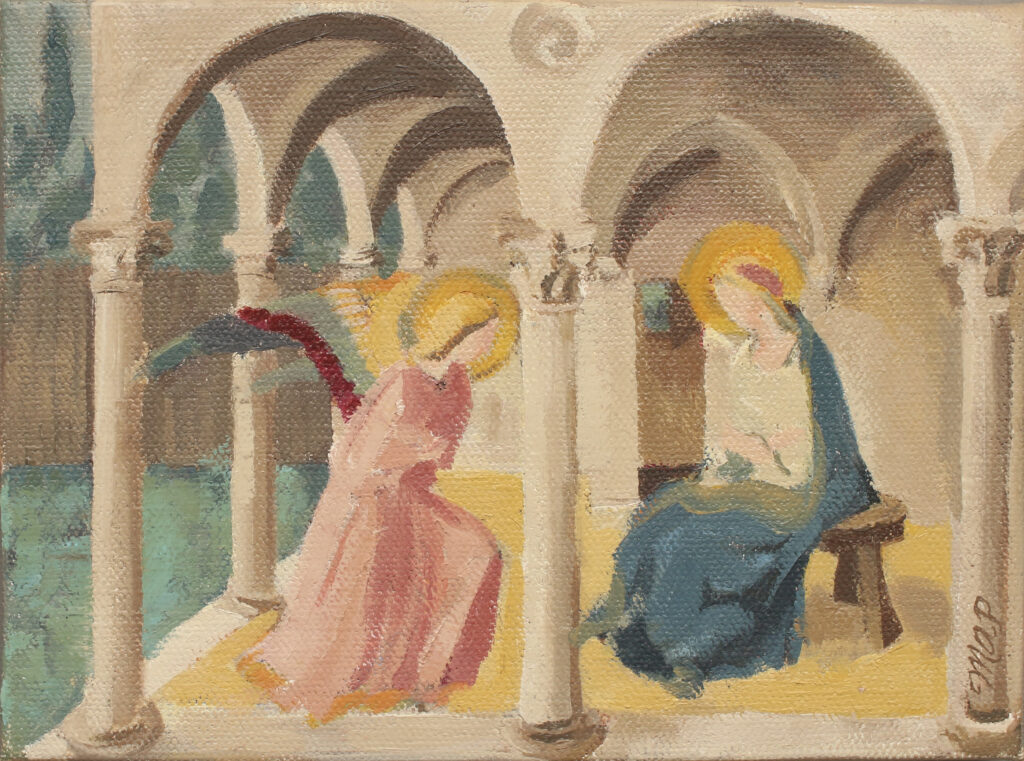
Making “transcriptions” of some of the classic Annunciation paintings is a studio practice which is also a meditation. This part of my studio practice originated from my time participating in a New York Studio School Drawing Marathon.

Making “transcriptions” of some of the classic Annunciation paintings is a studio practice which is also a meditation. This part of my studio practice originated from my time participating in a New York Studio School Drawing Marathon.
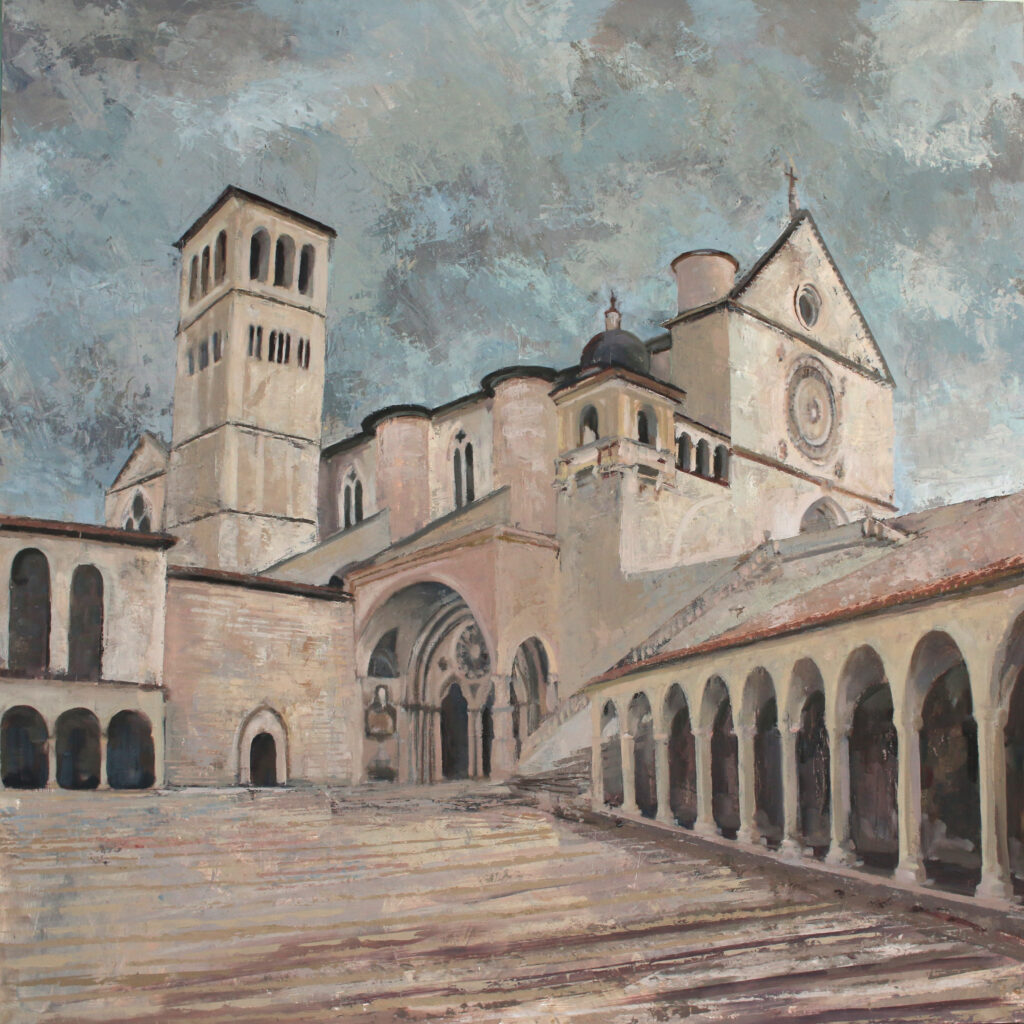
Pope Francis and Saint Francis This reflection was first published as the May newsletter for the Network of Christians in Visual Arts Over Easter, I was blessed to spend two…
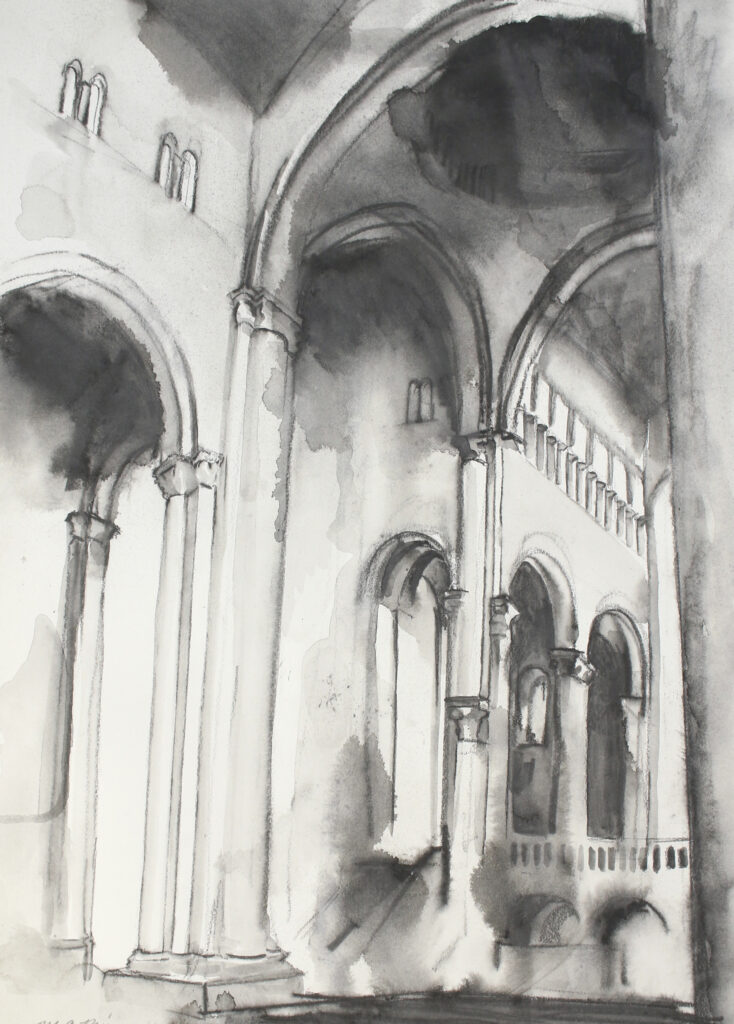
I looked for inspiration in the solidity and the weight of Romanesque architecture, the feeling of permanence rather than flight. Romanesque (“In the Roman manner”) architecture developed around the turn of the first millennium. This was the time of a church building boom in Western Europe.
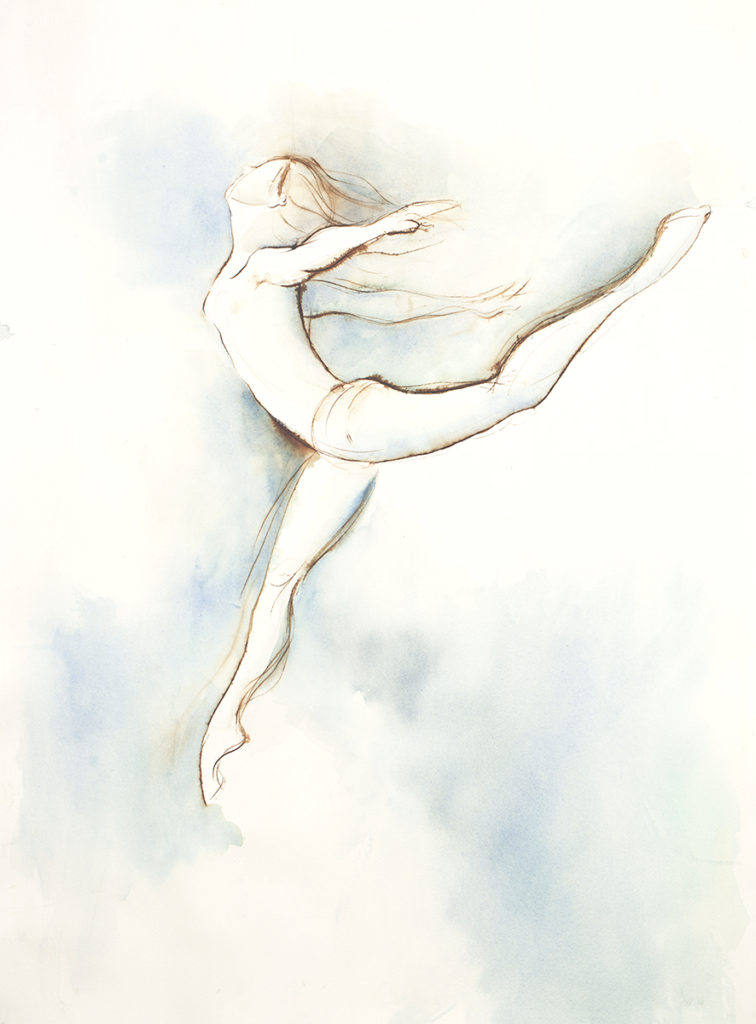
To me, Mary dances the Magnificat. The Magnificat is Mary’s song of Thanksgiving after the angel Gabriel comes to tell her she will become the mother of the Messiah (the Annunciation). When I read Mary’s Magnificat song in Luke 1:46-55, the language is so exuberant that I can’t imagine her standing still.
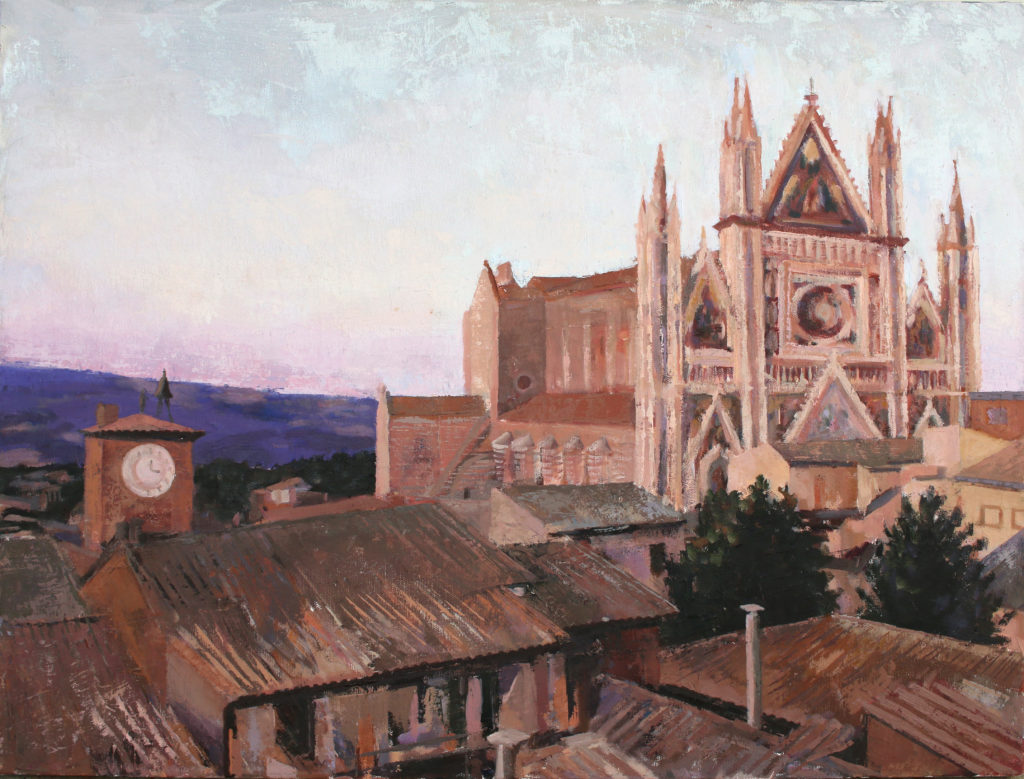
In my early 20s I spent eight semesters in Italy spread out over six years. During that period I embarked on a spiritual journey from an academic encounter with Catholic art to being received into the Catholic Church and receiving Confirmation and First Communion in the Cathedral of Orvieto. On this Feast of Corpus Domini, 2022, I share this short essay from while I was preparing for Confirmation in 2001 and a more recent video in which I share the importance of the Eucharist in my journey to the Catholic Church.
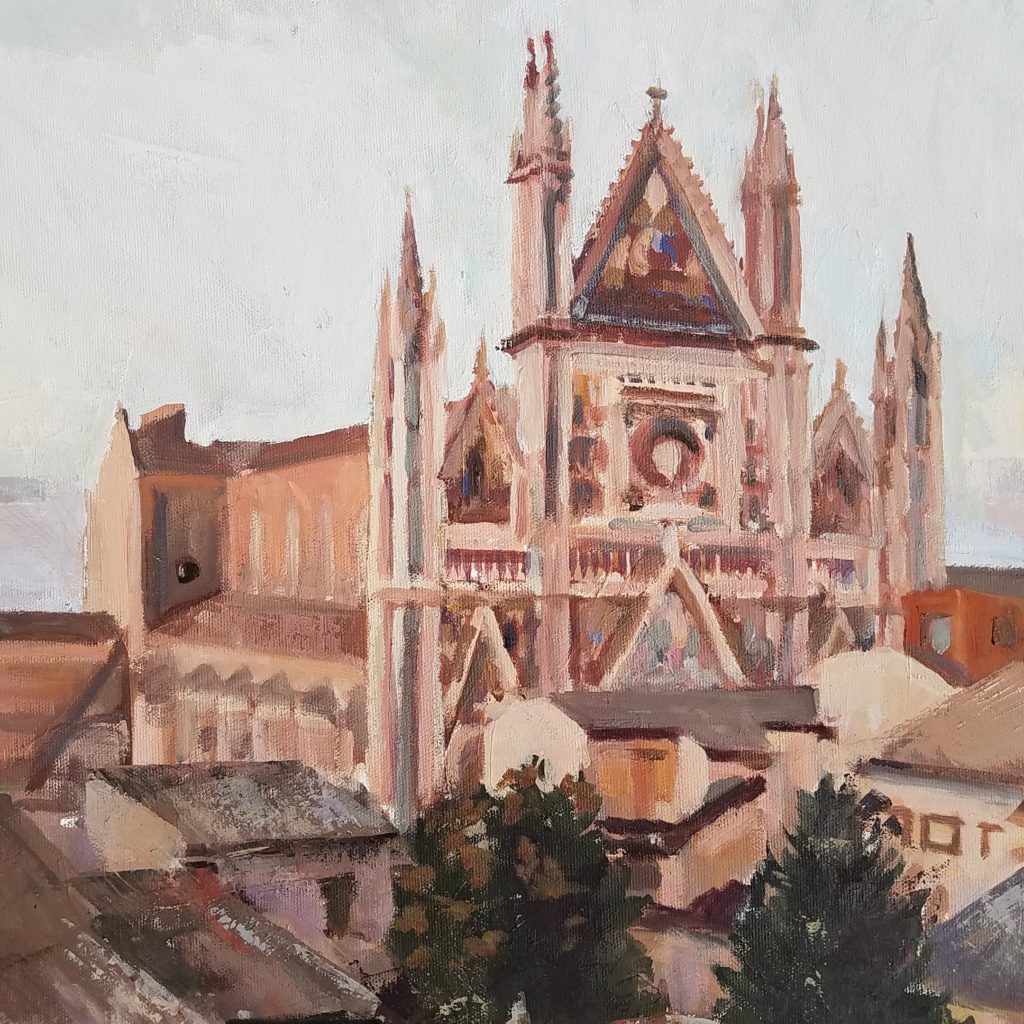
Processing the 20th anniversary of September 11th this weekend has led me to reflect that living abroad at that moment was in fact formative to my politics, my worldview, and my faith. I’m sharing my journal from the moments after September 11th in Orvieto in the hopes that it may be an encouragement to someone in the midst of divisive times.
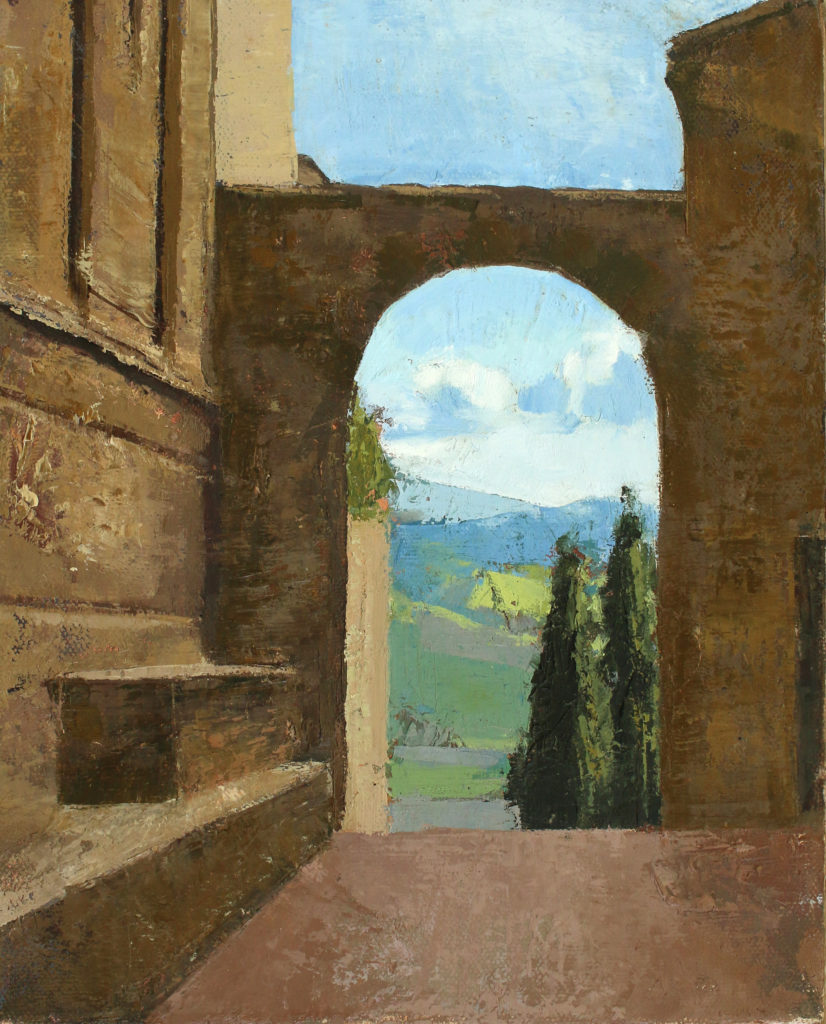
Pienza is a hilltop town, and past this doorway the ground drops steeply into stairs. To me this painting represents how we look at the future in this moment. We see something beautiful, but hazy right now. Because of the pandemic, it is difficult to discern how far off that landscape may actually be and how we might arrive there.
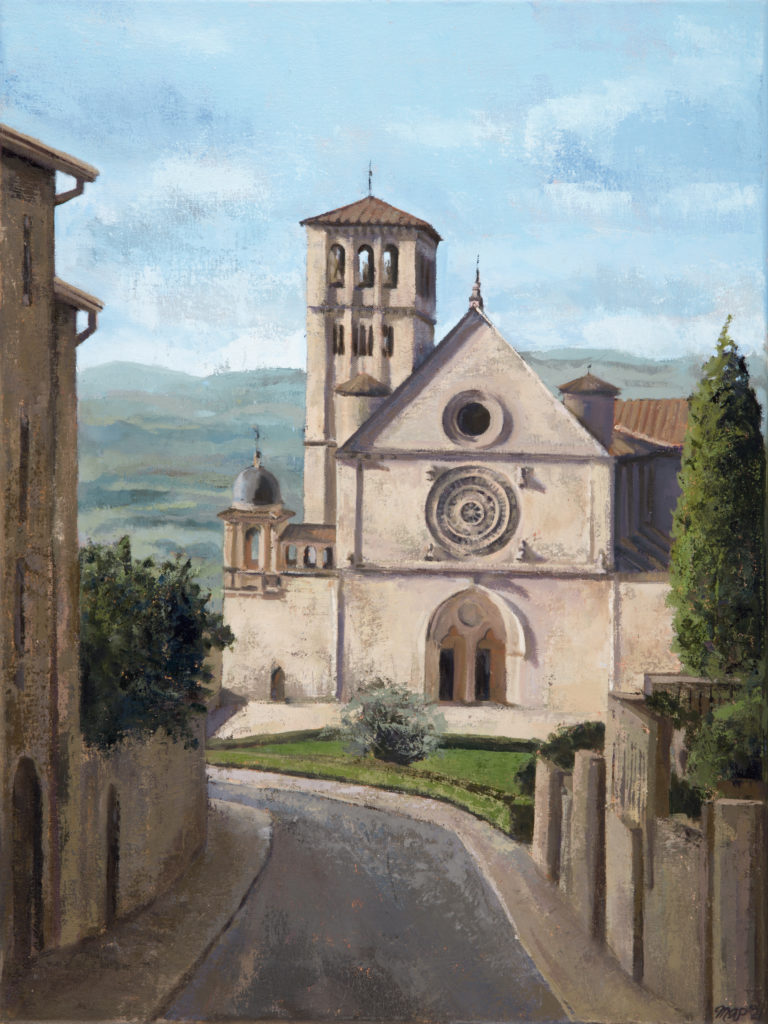
In a similar way, I returned to the shapes and images from my time in Assisi many times. I felt a sense of mystery in the images of rhythms of dark and light. Through drawing and painting I explored the arches of an alleyway multiple times. For me it was not simple documentation of medieval architecture. To me these passageways were like my pilgrimages themselves -a path to something beyond what was visible.
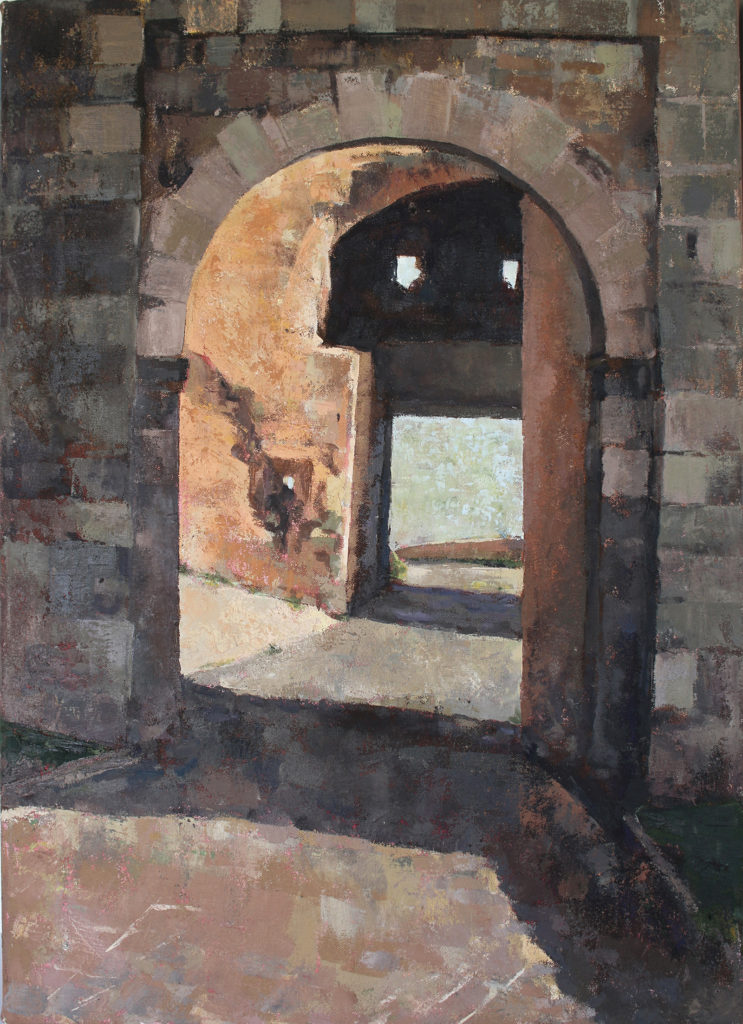
The arch in this painting is called the “Porta Postierla”, which leads out of the clifftop town of Orvieto, Italy and down towards the train station. The road criss-crosses the path of the funicular which is the way most tourists arrive in Orvieto. But when I lived there I loved to use the slower, medieval path.
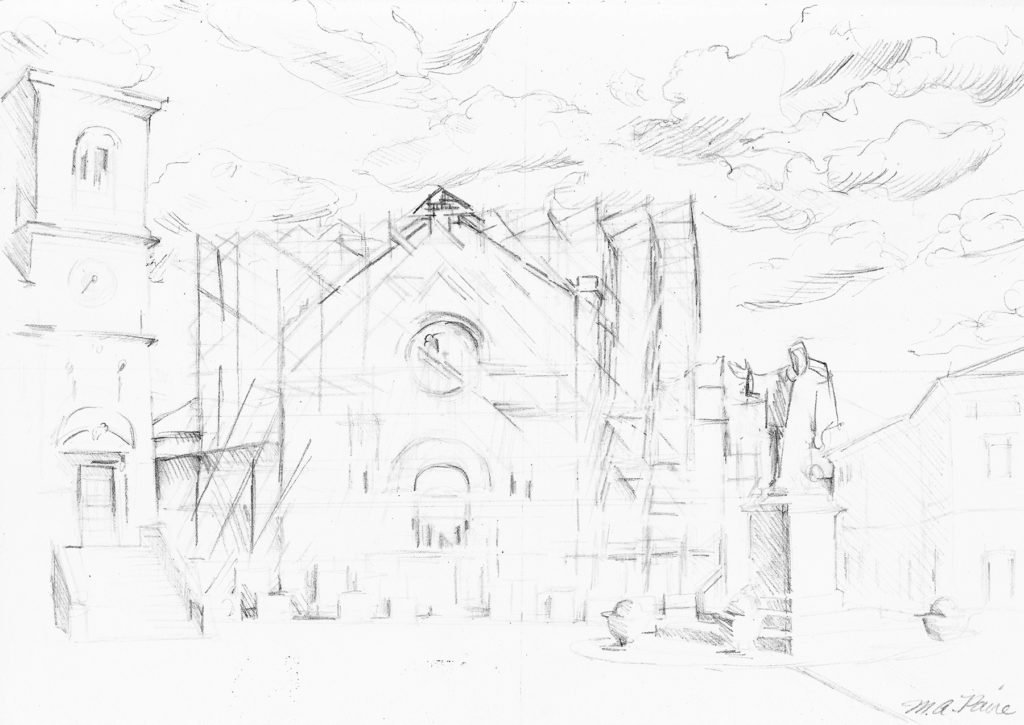
This new painting depicts the Basilica of Saint Benedict of Nursia in its current partially-ruined state, after the earthquakes, enveloped in scaffolding. Fragile. Waiting. Precarious. It has become more poignant in recent months…
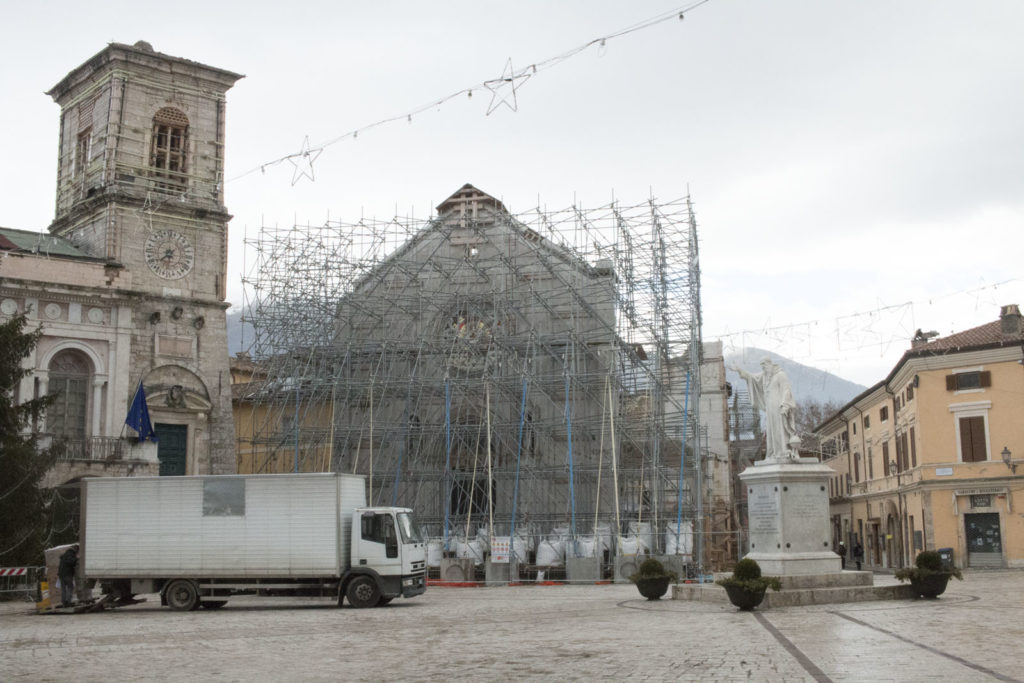
In 2016 an earthquake and aftershocks crumbled many parts of the town of Norcia, birthplace of Saint Benedict, founder of Western monasticism. The Monks of Norcia and their rebuilding become symbols of hope in the Catholic church.

The medieval city of Civita di Bagnoregio is a place of mysterious layers, buildings destroyed by earthquakes and time, where you can see the evolution of the centuries of construction and destruction. In the process of layering new paintings on top of old I found metaphors for both the place itself and memories of it.
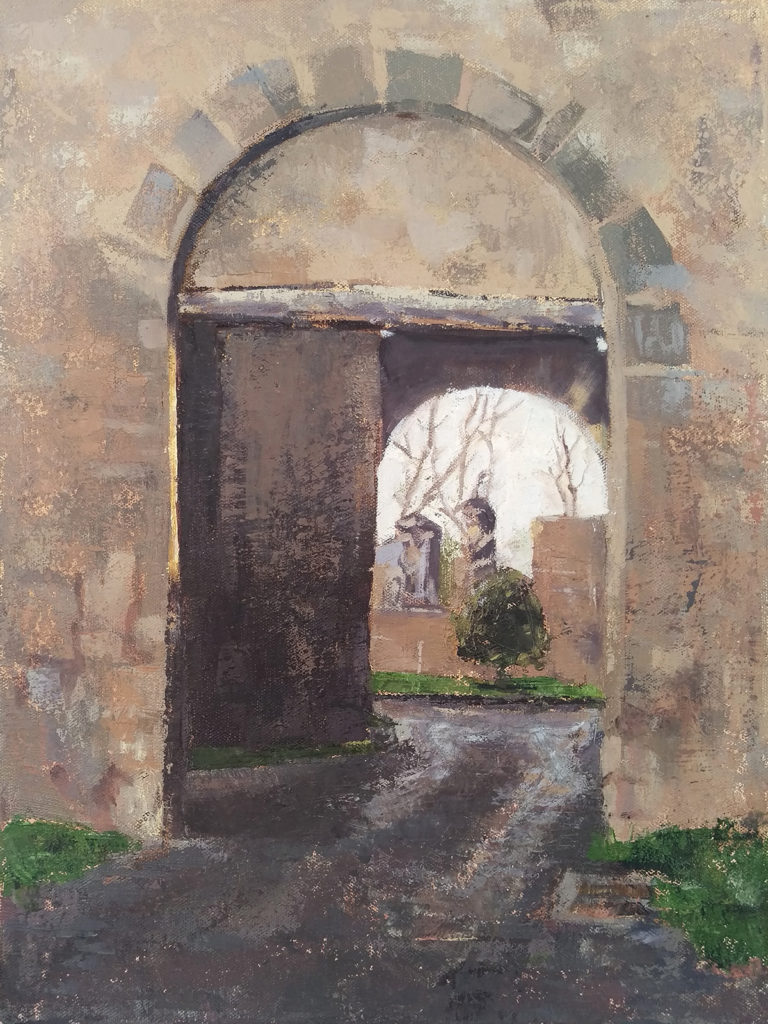
Teaching and Art-Making. Teaching and Art-Making: Classical Education Paints A Door to the Past. Recent paintings and a return to teaching serve as a reminder of the past and…
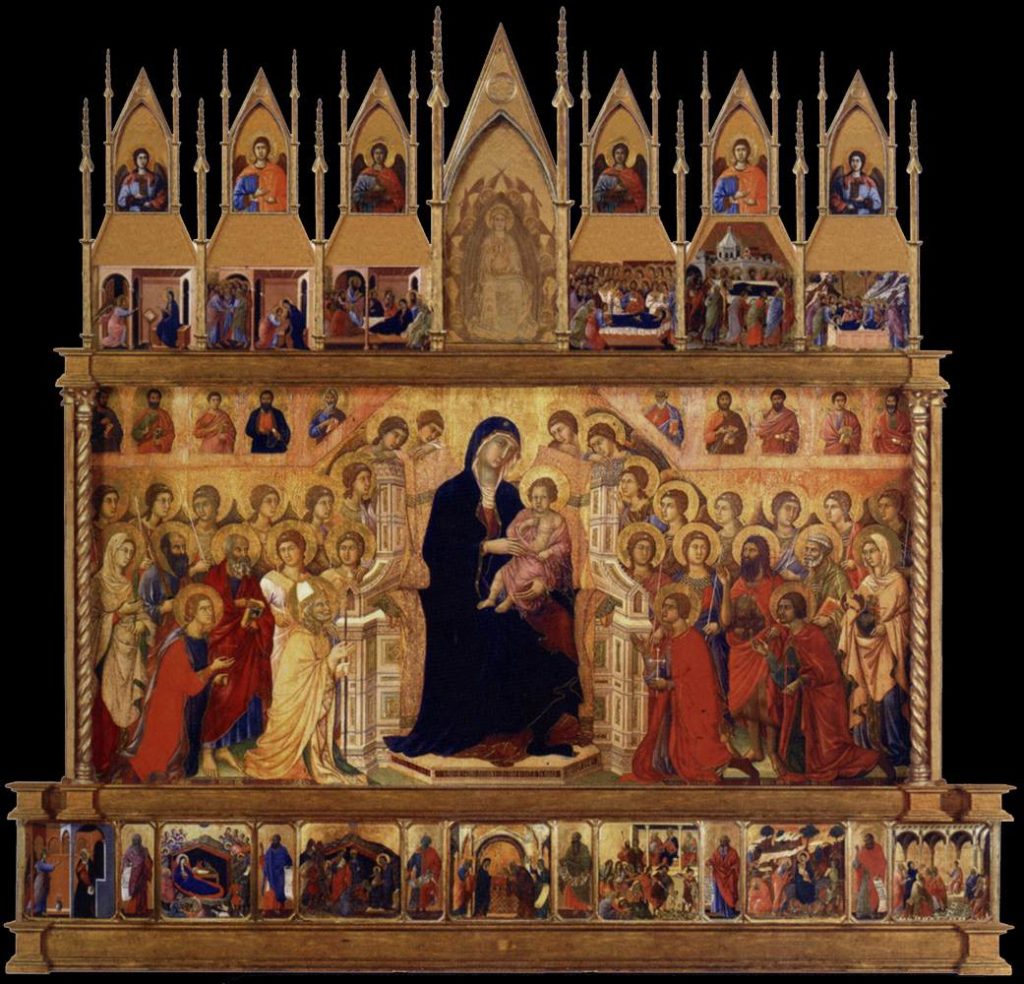
“Sacred art is true and beautiful when its form corresponds to its particular vocation: evoking and glorifying, in faith and adoration, the transcendent mystery of God.” From the Catechism of…
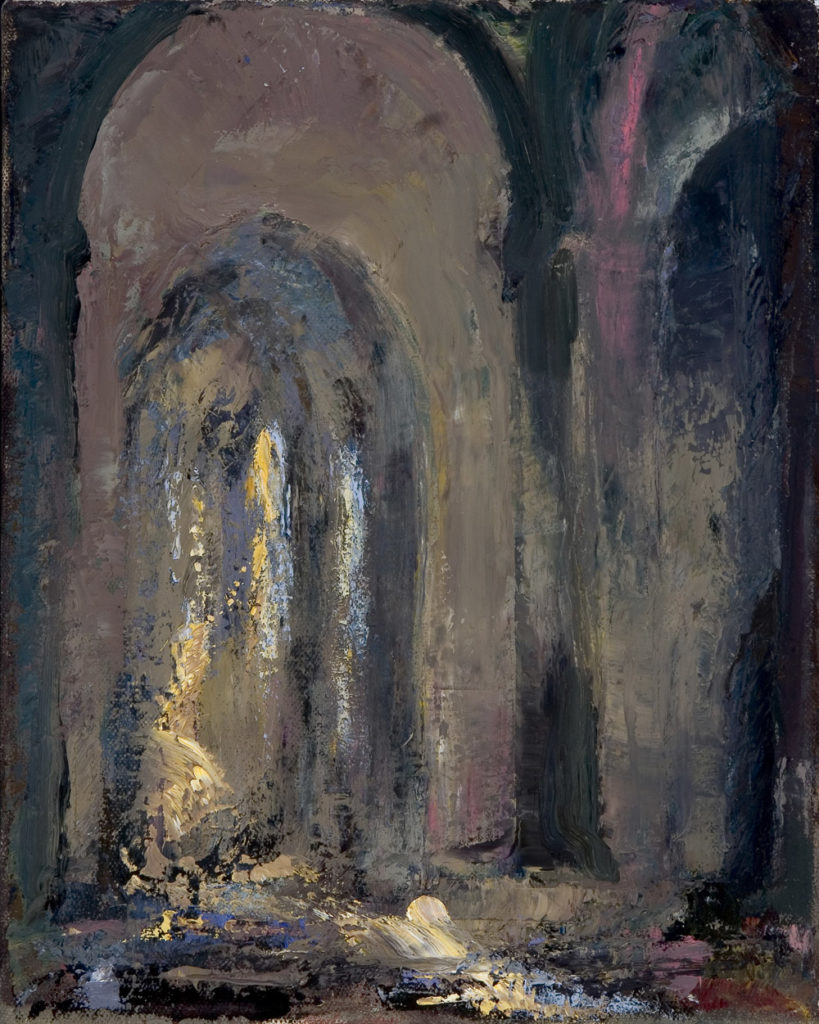
The exteriors of local churches shape the landscape of daily life-about-town, but their interiors have helped shape spiritual lives for centuries. In Europe, cavernous sacred spaces were built for throngs of religious activity, but now hold only shadows of those presences. The shapes of archways reaching towards heaven, the rhythm of dark and light passing through complex spaces inspire a sense of quiet awe and shadowy mystery.
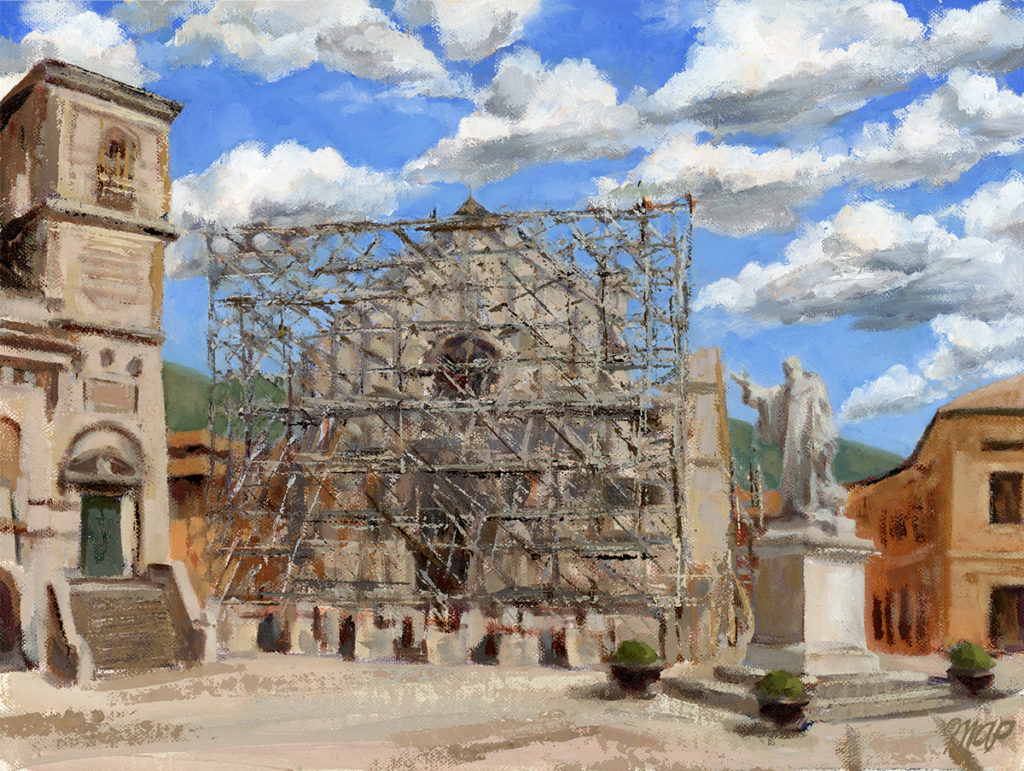
These new paintings have become my own reflection on the work of rebuilding tradition. One commemorates the Basilica as it looked before the earthquake. The second depicts it in its currently ruined state. One painting was commissioned by a Catholic, the other by a Protestant, and so together they are a witness to the influence of the great Saint Benedict on Christian life.
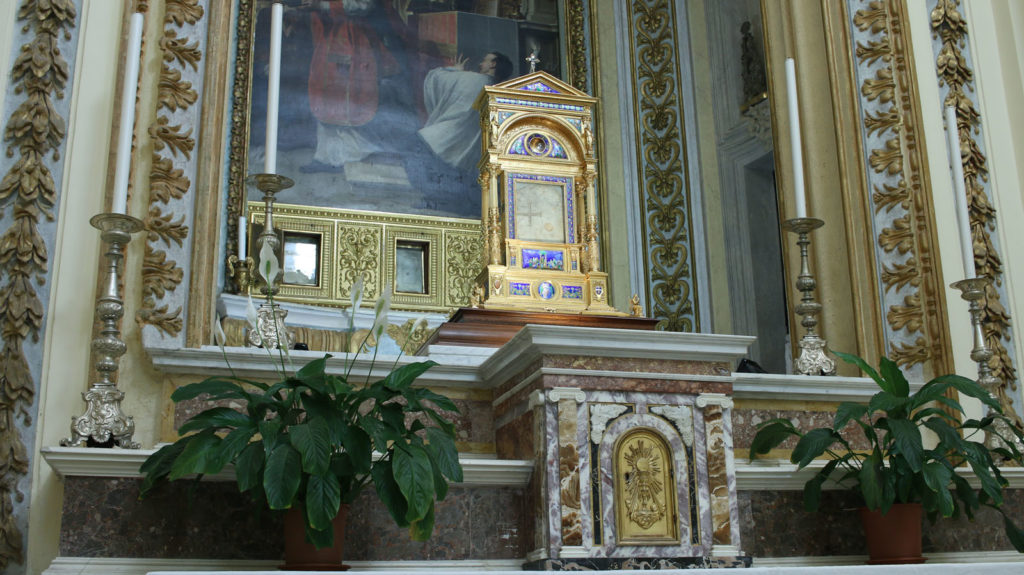
Orvieto was the birthplace for the feast of the Eucharist, called Corpus Domini, and one of the major feasts of the Catholic church. The Cathedral of Orvieto holds a treasure – a number of them, really, including frescos by Luca Signorelli, Gentile di Fabriano, and Fra Angelico. But its spiritual treasure is a relic from the Miracle of Bolsena, the miracle which was the final impetus in the church’s decision to institute the festival of Corpus Domini: “Body of the Lord”. This feast is a reminder to artists and non-artists alike that Art and Beauty can model the Incarnation in the world.
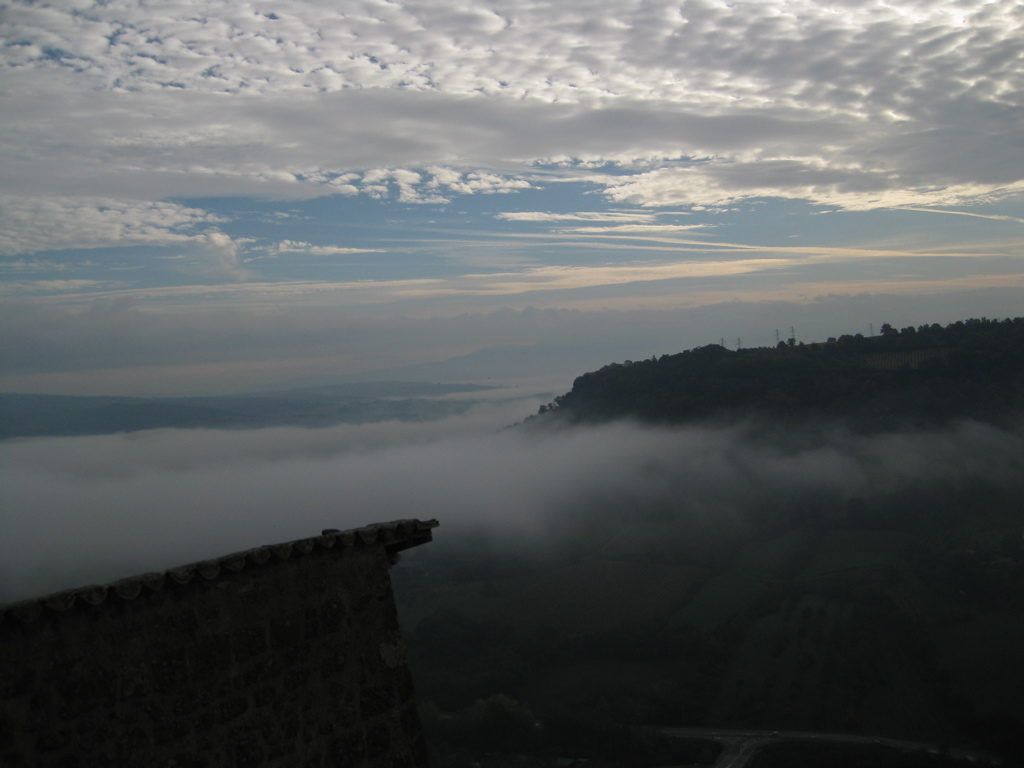
There are some experiences in life that stay with us far, far deeper and longer than measurable space and time would warrant. In my early 20s I spent three years working for the Gordon-in-Orvieto program in Orvieto, Italy. The experiences and the people continue to live so vividly within me that the distance of time and space does not seem possible.

You’ve probably noticed that much of the subject matter of my work has Christian undertones – church architecture, references to the Virgin Mary, as well as to aspects of art…

For the month of December my sacred architecture paintings will be on exhibit at IMAGINE: Northampton, a small, non-profit gallery and church in Northampton, MA. Northampton has a very active…
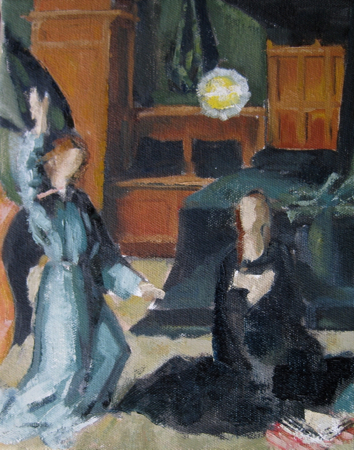
This Annunciation transcription will be included in the exhibit Compassion: The Good Samaritan, opening at Adams ArtSpace, Harvard College, Cambridge this weekend.
The Annunciation is the moment when God comes to earth – when human and divine come together to become incarnate in Jesus, Savior of the world. The Incarnation, God’s greatest act of compassion.

Appropriate to post another Annunciation transcription today, the Feast of the Archangels (Gabriel, Michael and Raphael). This particular Renaissance Annunciation infuses Classical architecture into the Biblical story of the Gabriel’s announcement to Mary. The painting also shows off the artists’ knowledge of perspective in the way that the artist places the angel in the foreground.
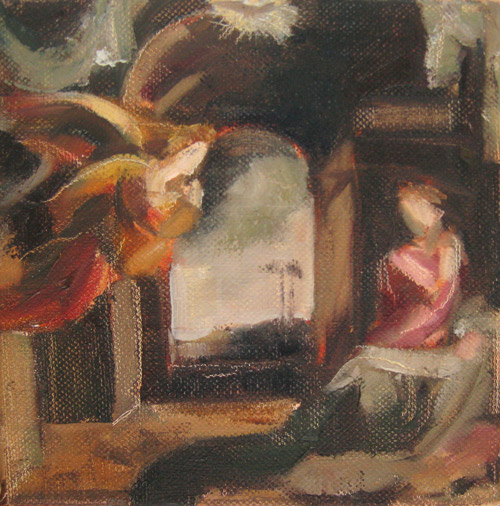
Another in my series of Annunciation transcriptions. The original Mannerist painting was completed in 1546 by Italian Domenico Beccafumi and is currently in the little town of Sarteano near Siena, Italy. I’m not always a fan of Mannerism, but I like the mirrored swooping curves in this painting and the sense of motion it creates, so different from the very still, stable Annunciations of Fra Angelico.
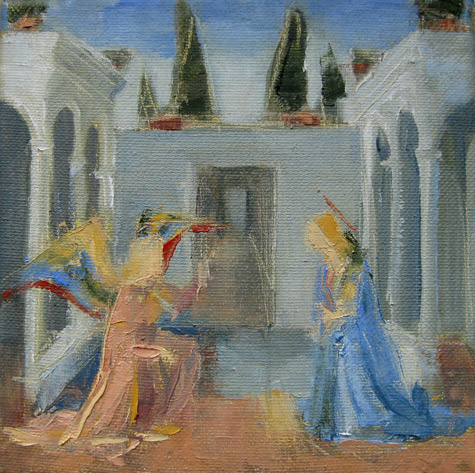
Another in my little “Annunciations from the Masters” series, from a predella by Fra Angelico, 15th century Florentine painter, who was also a Dominican brother. Graham Nickson of the New York Studio School says “the transcription endeavors to understand the nature of the original work.
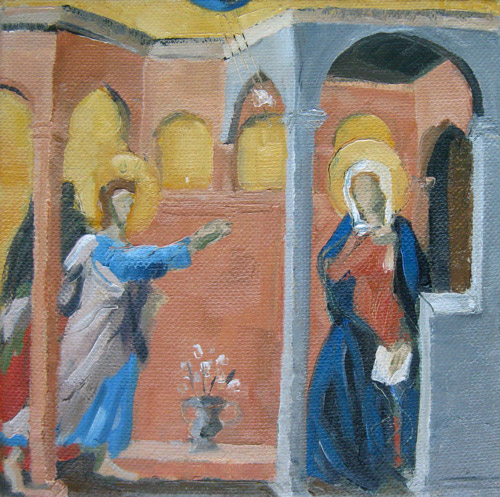
What is the purpose of “copying” a work of art? Franklin Enspruch phrases it like this in a review of Wendy Artin’s series of watercolors of the Elgin Marbles: “She is at once paying the sculptures due homage, studying them for artistic clues, and using them to reach upward in ambition and scale.”
Somehow, in entering in to someone else’s creation, one often emerges at the other end with a clearer, renewed sense of voice and direction.

I love the brilliant blue and of Mary and her contemplative gaze in the Annunciation altarpiece by Ambrogio Lorenzetti. Lorenzetti was a Sienese painter in the first half of the 14th century and this work of his is presently housed in the Pinacoteca Nazionale in Siena, Italy. My version is tiny, only 6″ x 6″, but I’m looking for the contemplative quality he captures.

These paintings are a metaphor for the struggle of my own experience to know Christ and seek to become more like his mother Mary. The metaphors in this poem, and others found throughout art history, continue to open my understanding of Christ’s relationship with his mother.

epiphany (i pif e nee)
I can identify with the magi. They were looking for truth, seeking some sort of center, some sort of knowledge, some sort of anchor.
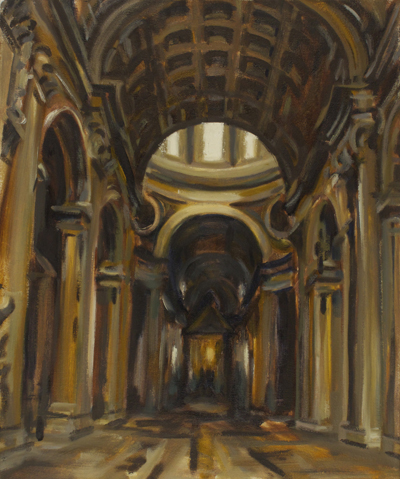
Some recent paintings and drawings of Saint Peter’s Basilica in Rome, on the occasion of the beatification of Pope John Paul II. John Paul II prayed for a “Primavera dello Spirito”: a Springtime of the Spirit. His prayer for a “Springtime of the Spirit” was answered in a multitude of ways, from the flood of youth who attended the World Youth Days (which he began).
On Friday I made a little trip to see a cycle of paintings by Gordon Goetemann at Andover-Newton Theological School in Newton Center, MA. The cycle of large paintings is inispired by Gustav Mahler’s 2nd Symphony in C Minor — the “Resurrection” symphony. I had found out about it from a friend who had seen the show at the Cape Ann Museum in Gloucester. We were both interested in it because of the time we spent in Orvieto, where there are two great artworks representing the Resurrection of the Flesh…

Cardus has just published another of my paintings in their online journal Comment.
Our Lady of the Barren Tree is an image of hope: the strange beauty of winter, in which it requries faith to believe that trees and grass are only “sleeping” and will return with new life and growth.
The tree, the vine, the branches – these images evoke the memory of Eve in the garden of Eden whose disobedience eventually brought on the exile of humanity from paradise. Eve’s disobedience was eventually redeemed in the act of Mary’s obedient “May it be to me as you have said”.
It is January, and rather cold, blah, and sleepy, so I thought I’d continue to share some images of my trip to Italy in November, as a brief mental “winter getaway”. The Gordon College in Italy program is housed in the convent of San Paolo, one of several convents that ring the perimeter of the volcanic mesa on which the ancient city of Orvieto sits.
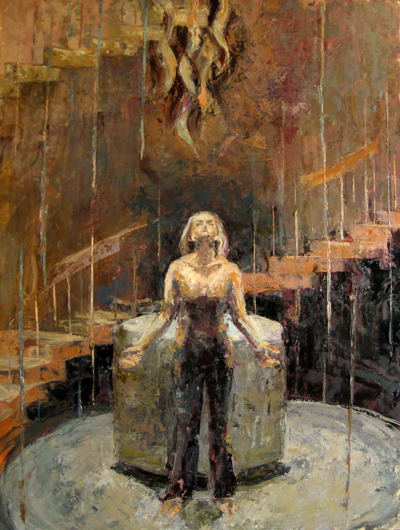
My painting of “Mary the Font” was inspired by, and is now in the collection of, Valparaiso University Chapel. During the Artist-in-Residency I had at Valparaiso University in December I…
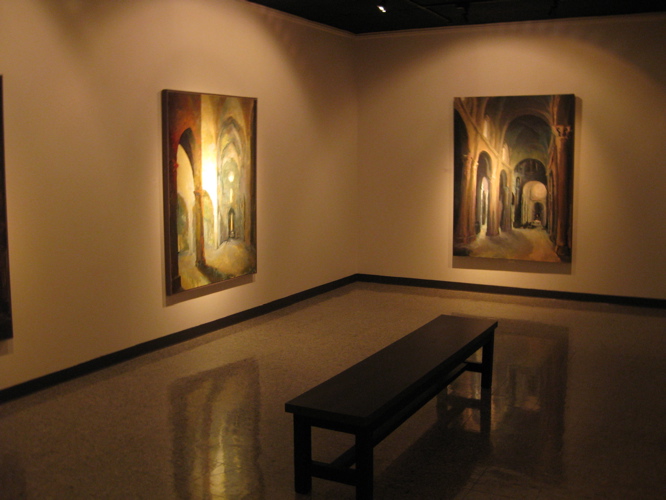
I just received my work back from my exhibit at Rivier College in Nashua, New Hampshire. Sr. Theresa Couture did a really beautiful job curating and hanging the show, and I was very privileged to be able to exhibit and speak there for the November-December…

Friday of the second week of our stay in Orvieto we spent a day in Rome, always an amazing experience. In the morning I went to the Villa Borghese museum with a small group of students to see the special Francis Bacon-Caravaggio exhibit.

This is one of those days I would love to be back in Italy – it is warm, but not too warm, but somehow the lure of my suburban street is not as strong as the lure of an Italian street – when I am there I am always pulled outdoors to smell and see and greet and experience some one or some thing that is “new”. But part of the lure is that there is so much that is not new – it is the very, very old which is so appealing.